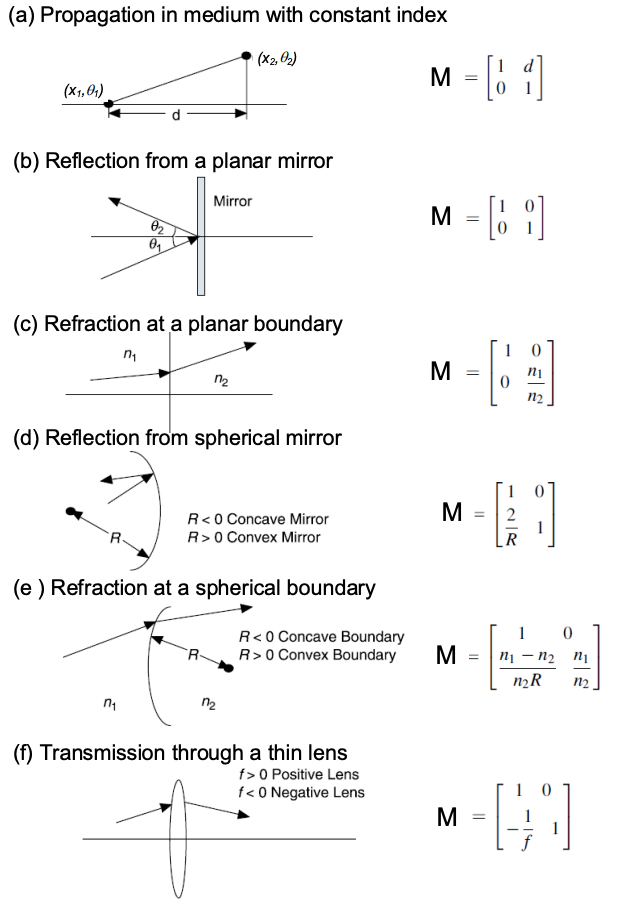Overview
Ray Optics Electromagnetic Optics Guided Wave Optics Pilarization Coherence and Interference Fourier Optics and Diffraction Guided-Wave Optics Waveguides Optical Fibers Lasers Plasmonics (using metalics to guide light)
Ray Optics
Ray optics approximates electromagnetic waves as rays and focuses on the location and direction of light rays.
This approximation is valid only if the dimensions of disturbances and elements are much larger than the wavelength and if the wavelength is infinitely small.
Ray optics is useful for studying light paths in media with large-scale optical objects and for solving image formation problems.
Postulates
1. Light travels in rays (not waves)
2. An optical medium is characterized by "n" the refractive index
3. Fermat's Principle: Optical rays travel along the path of least-time: $\delta L_{\mathrm{p}}=\int_A^B n(\boldsymbol{r}) d r=0$
A parabola mirror maps an image onto a single focal point.
Ray Transfer Matrix Optics


